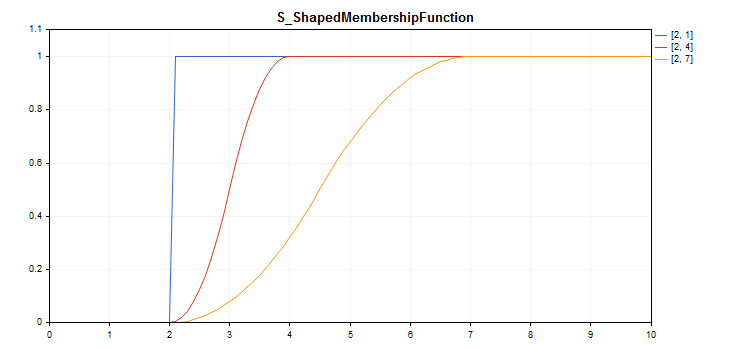CS_ShapedMembershipFunction
Clase para la implementación de la función de pertenencia en forma de S con los parámetros A y B.
Descripción
La función crea una función de pertenencia en forma de S de dos parámetros. Se trata de una función no disminutiva que adopta valores de 0 a 1. Los parámetros А y В definen el intervalo dentro del cual la función crece en trayectoria lineal de 0 a 1.
Con la ayuda de esta función se presentan los conjuntos difusos del tipo "muy alto" (es decir, se crean funciones de pertenencia no decrecientes con saturación).

Un ejemplo de código para construir este gráfico se muestra más abajo.
Declaración
class CS_ShapedMembershipFuncion : public IMembershipFunction |
Encabezamiento
#include <Math\Fuzzy\membershipfunction.mqh> |
Jerarquía de herenciaCS_ShapedMembershipFunction |
Métodos de clase
Método de clase |
Descripción |
|---|---|
Retorna y establece el parámetro del comienzo del intervalo de incremento. |
|
Retorna y establece el primer parámetro del núcleo de un conjunto difuso. |
|
Calcula el valor de la función de pertenenecia según el argumento indicado. |
//+------------------------------------------------------------------+
|